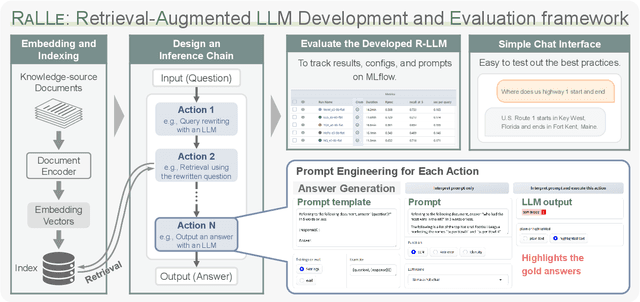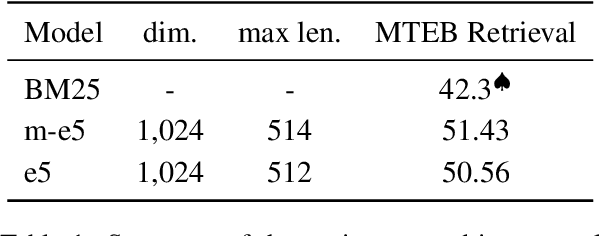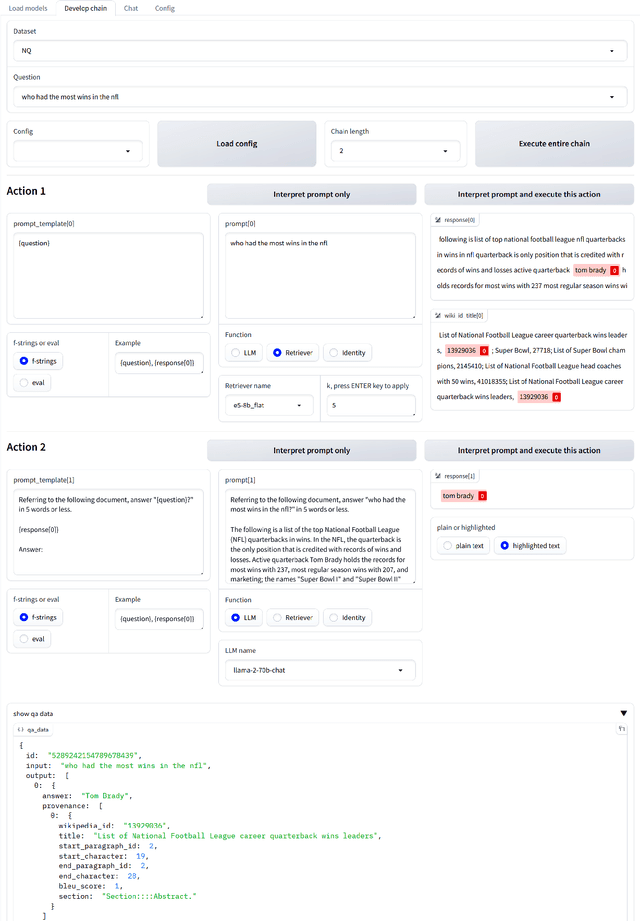Youyang Ng
Prompt-Guided Attention Head Selection for Focus-Oriented Image Retrieval
Apr 02, 2025Abstract:The goal of this paper is to enhance pretrained Vision Transformer (ViT) models for focus-oriented image retrieval with visual prompting. In real-world image retrieval scenarios, both query and database images often exhibit complexity, with multiple objects and intricate backgrounds. Users often want to retrieve images with specific object, which we define as the Focus-Oriented Image Retrieval (FOIR) task. While a standard image encoder can be employed to extract image features for similarity matching, it may not perform optimally in the multi-object-based FOIR task. This is because each image is represented by a single global feature vector. To overcome this, a prompt-based image retrieval solution is required. We propose an approach called Prompt-guided attention Head Selection (PHS) to leverage the head-wise potential of the multi-head attention mechanism in ViT in a promptable manner. PHS selects specific attention heads by matching their attention maps with user's visual prompts, such as a point, box, or segmentation. This empowers the model to focus on specific object of interest while preserving the surrounding visual context. Notably, PHS does not necessitate model re-training and avoids any image alteration. Experimental results show that PHS substantially improves performance on multiple datasets, offering a practical and training-free solution to enhance model performance in the FOIR task.
Improving Image Clustering with Artifacts Attenuation via Inference-Time Attention Engineering
Oct 07, 2024



Abstract:The goal of this paper is to improve the performance of pretrained Vision Transformer (ViT) models, particularly DINOv2, in image clustering task without requiring re-training or fine-tuning. As model size increases, high-norm artifacts anomaly appears in the patches of multi-head attention. We observe that this anomaly leads to reduced accuracy in zero-shot image clustering. These artifacts are characterized by disproportionately large values in the attention map compared to other patch tokens. To address these artifacts, we propose an approach called Inference-Time Attention Engineering (ITAE), which manipulates attention function during inference. Specifically, we identify the artifacts by investigating one of the Query-Key-Value (QKV) patches in the multi-head attention and attenuate their corresponding attention values inside the pretrained models. ITAE shows improved clustering accuracy on multiple datasets by exhibiting more expressive features in latent space. Our findings highlight the potential of ITAE as a practical solution for reducing artifacts in pretrained ViT models and improving model performance in clustering tasks without the need for re-training or fine-tuning.
Rethinking Sparse Lexical Representations for Image Retrieval in the Age of Rising Multi-Modal Large Language Models
Aug 29, 2024



Abstract:In this paper, we rethink sparse lexical representations for image retrieval. By utilizing multi-modal large language models (M-LLMs) that support visual prompting, we can extract image features and convert them into textual data, enabling us to utilize efficient sparse retrieval algorithms employed in natural language processing for image retrieval tasks. To assist the LLM in extracting image features, we apply data augmentation techniques for key expansion and analyze the impact with a metric for relevance between images and textual data. We empirically show the superior precision and recall performance of our image retrieval method compared to conventional vision-language model-based methods on the MS-COCO, PASCAL VOC, and NUS-WIDE datasets in a keyword-based image retrieval scenario, where keywords serve as search queries. We also demonstrate that the retrieval performance can be improved by iteratively incorporating keywords into search queries.
Revisiting Relevance Feedback for CLIP-based Interactive Image Retrieval
Apr 29, 2024Abstract:Many image retrieval studies use metric learning to train an image encoder. However, metric learning cannot handle differences in users' preferences, and requires data to train an image encoder. To overcome these limitations, we revisit relevance feedback, a classic technique for interactive retrieval systems, and propose an interactive CLIP-based image retrieval system with relevance feedback. Our retrieval system first executes the retrieval, collects each user's unique preferences through binary feedback, and returns images the user prefers. Even when users have various preferences, our retrieval system learns each user's preference through the feedback and adapts to the preference. Moreover, our retrieval system leverages CLIP's zero-shot transferability and achieves high accuracy without training. We empirically show that our retrieval system competes well with state-of-the-art metric learning in category-based image retrieval, despite not training image encoders specifically for each dataset. Furthermore, we set up two additional experimental settings where users have various preferences: one-label-based image retrieval and conditioned image retrieval. In both cases, our retrieval system effectively adapts to each user's preferences, resulting in improved accuracy compared to image retrieval without feedback. Overall, our work highlights the potential benefits of integrating CLIP with classic relevance feedback techniques to enhance image retrieval.
RaLLe: A Framework for Developing and Evaluating Retrieval-Augmented Large Language Models
Aug 21, 2023



Abstract:Retrieval-augmented large language models (R-LLMs) combine pre-trained large language models (LLMs) with information retrieval systems to improve the accuracy of factual question-answering. However, current libraries for building R-LLMs provide high-level abstractions without sufficient transparency for evaluating and optimizing prompts within specific inference processes such as retrieval and generation. To address this gap, we present RaLLe, an open-source framework designed to facilitate the development, evaluation, and optimization of R-LLMs for knowledge-intensive tasks. With RaLLe, developers can easily develop and evaluate R-LLMs, improving hand-crafted prompts, assessing individual inference processes, and objectively measuring overall system performance quantitatively. By leveraging these features, developers can enhance the performance and accuracy of their R-LLMs in knowledge-intensive generation tasks. We open-source our code at https://github.com/yhoshi3/RaLLe.
SimplyRetrieve: A Private and Lightweight Retrieval-Centric Generative AI Tool
Aug 08, 2023Abstract:Large Language Model (LLM) based Generative AI systems have seen significant progress in recent years. Integrating a knowledge retrieval architecture allows for seamless integration of private data into publicly available Generative AI systems using pre-trained LLM without requiring additional model fine-tuning. Moreover, Retrieval-Centric Generation (RCG) approach, a promising future research direction that explicitly separates roles of LLMs and retrievers in context interpretation and knowledge memorization, potentially leads to more efficient implementation. SimplyRetrieve is an open-source tool with the goal of providing a localized, lightweight, and user-friendly interface to these sophisticated advancements to the machine learning community. SimplyRetrieve features a GUI and API based RCG platform, assisted by a Private Knowledge Base Constructor and a Retrieval Tuning Module. By leveraging these capabilities, users can explore the potential of RCG for improving generative AI performance while maintaining privacy standards. The tool is available at https://github.com/RCGAI/SimplyRetrieve with an MIT license.
Can a Frozen Pretrained Language Model be used for Zero-shot Neural Retrieval on Entity-centric Questions?
Mar 09, 2023Abstract:Neural document retrievers, including dense passage retrieval (DPR), have outperformed classical lexical-matching retrievers, such as BM25, when fine-tuned and tested on specific question-answering datasets. However, it has been shown that the existing dense retrievers do not generalize well not only out of domain but even in domain such as Wikipedia, especially when a named entity in a question is a dominant clue for retrieval. In this paper, we propose an approach toward in-domain generalization using the embeddings generated by the frozen language model trained with the entities in the domain. By not fine-tuning, we explore the possibility that the rich knowledge contained in a pretrained language model can be used for retrieval tasks. The proposed method outperforms conventional DPRs on entity-centric questions in Wikipedia domain and achieves almost comparable performance to BM25 and state-of-the-art SPAR model. We also show that the contextualized keys lead to strong improvements compared to BM25 when the entity names consist of common words. Our results demonstrate the feasibility of the zero-shot retrieval method for entity-centric questions of Wikipedia domain, where DPR has struggled to perform.
Revisiting a kNN-based Image Classification System with High-capacity Storage
Apr 03, 2022



Abstract:In existing image classification systems that use deep neural networks, the knowledge needed for image classification is implicitly stored in model parameters. If users want to update this knowledge, then they need to fine-tune the model parameters. Moreover, users cannot verify the validity of inference results or evaluate the contribution of knowledge to the results. In this paper, we investigate a system that stores knowledge for image classification, such as image feature maps, labels, and original images, not in model parameters but in external high-capacity storage. Our system refers to the storage like a database when classifying input images. To increase knowledge, our system updates the database instead of fine-tuning model parameters, which avoids catastrophic forgetting in incremental learning scenarios. We revisit a kNN (k-Nearest Neighbor) classifier and employ it in our system. By analyzing the neighborhood samples referred by the kNN algorithm, we can interpret how knowledge learned in the past is used for inference results. Our system achieves 79.8% top-1 accuracy on the ImageNet dataset without fine-tuning model parameters after pretraining, and 90.8% accuracy on the Split CIFAR-100 dataset in the task incremental learning setting.
 Add to Chrome
Add to Chrome Add to Firefox
Add to Firefox Add to Edge
Add to Edge